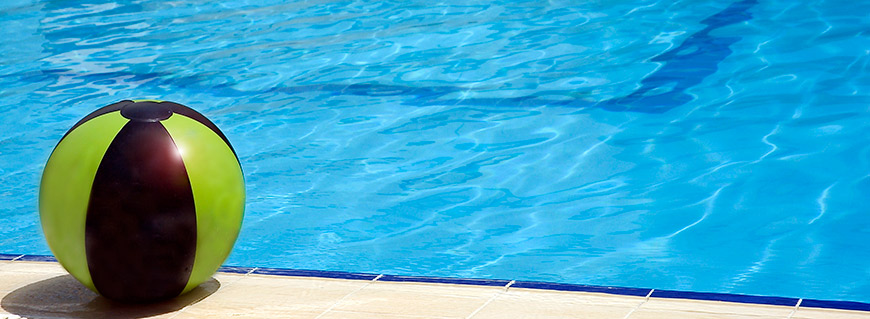
According to the Centers for Disease Control and Prevention, over 4,500 people drowned each year in the United States from 2020–2022. That is an average of 11 drowning deaths per day. More children ages 1-4 die from drowning than any other cause of death. Drowning is the second leading cause of unintentional injury death for children ages 5-14.
Swim safely
- View our detailed videos "Staying Safe While Having Fun in or Near the Water" in English and Spanish to gain practical safety tips for the ultimate swimming experience.
- Take swim lessons if you don’t know how to swim. Sign your kids up for lessons as soon as they are old enough.
- Learn how to perform CPR on children and adults.
- Swim near a lifeguard and never swim alone.
- Don't swim in pools or beaches that are closed.
- Don’t drink alcohol if you are swimming or watching children in the water.
- Use floating toys like water wings and noodles for fun – not for safety. They should NOT be used in place of life jackets.
- Watch out for rip currents at the beach. A rip current is when the water pulls you away from shore. If you get caught in a rip current, never fight it. If you find yourself in a rip current, swim parallel to the shore and at an angle.
Watch children carefully
- Make sure at least one adult is watching when children are in or around the water. Never leave a child unattended.
- Designate a water watcher to supervise children. This person should not be reading, texting, using a smart phone, or otherwise be distracted.
- Watch all children in the water, even if they know how to swim.
- Pool toys and floats are not a substitute for supervision.
- Keep children away from pool drains, pipes and other openings to avoid entrapments.
- Ensure any pool and spa you use has drain covers that comply with federal safety standards. Ask your pool service provider about safe drain covers if you are unsure.
Childproof your pool area
- Install a pool alarm.
- Limit access with fences and walls at least 4 feet high that completely enclose the pool and are no more than 2 inches above grade. Openings in the fence should be no more than 4 inches wide.
- Gates should self-close and self-latch and the latch must be out of a small child’s reach.
- The gate should open away from the pool; the latch should face the pool.
- Any doors with direct pool access should have an audible alarm that sounds for 30 seconds, including sliding doors, pet doors or other doors from the house to the pool when the house forms a barrier to the pool. The alarm control must be at least 54 inches high and reset automatically.
- Young children must always be watched carefully while swimming, regardless of whether they have taken swimming lessons. Pool toys and floats are no substititute for supervision.
- Steps and ladders to aboveground pools should be locked and secured or removed when the pool is not in use.
- Keep rescue equipment and a phone by the pool; post emergency numbers. Knowing CPR can save lives.
Check water and weather conditions before going swimming
- Don’t swim in the ocean, lakes, or rivers after heavy rain. Water is more likely to be polluted after a rain storm.
- Check for signs or warnings about bacteria or other pollution in the water.
- Get out of the water right away if you hear thunder or see lightning. Strong winds can also be dangerous.
Take precautions against recreational water illness
- Practice good hygiene to avoid getting a recreational water-borne illness. It is important to shower before swimming or using spray park features and always wash hands after using the toilet or changing diapers. Germs on one's body may get into the water.
- Never drink the water when swimming or using spray park features and avoid getting water in your mouth. It is important to note that water at most spray parks is recycled and should not be consumed.
- Do not use spray park features, swimming pools or beaches when you have diarrhea. This is especially important for infants and toddlers in diapers. This may spread germs in the water and make other people sick.
- Take children for bathroom breaks and/or check their diapers often. Children's diapers should be changed in a bathroom and not near spray park features, swimming pools or beach areas to prevent the spread of germs and illness.
Parasites
Swimmer's itch, also called cercarial dermatitis, is a skin rash caused by an allergic reaction to certain parasites that infect some birds and mammals. These microscopic parasites are released from infected snails into fresh and salt water, such as lakes, ponds, and oceans used for swimming and wading. If the parasite comes into contact with a swimmer, it burrows into the skin causing an allergic reaction and rash. Swimmer's itch generally occurs during the summer months.
Blue Green Algae Blooms in Streams, Lakes and Ponds
What is a Harmful Algal Bloom (HAB)? Most algae are harmless and are an important part of the food web. Algae are naturally present in slow moving streams, lakes, marine waters and ponds in low numbers. Certain types can become abundant and form blooms under the right conditions. Some algae can produce toxins that can be harmful to people and animals. These are collectively called harmful algal blooms (HABs).
Additional Resources:
